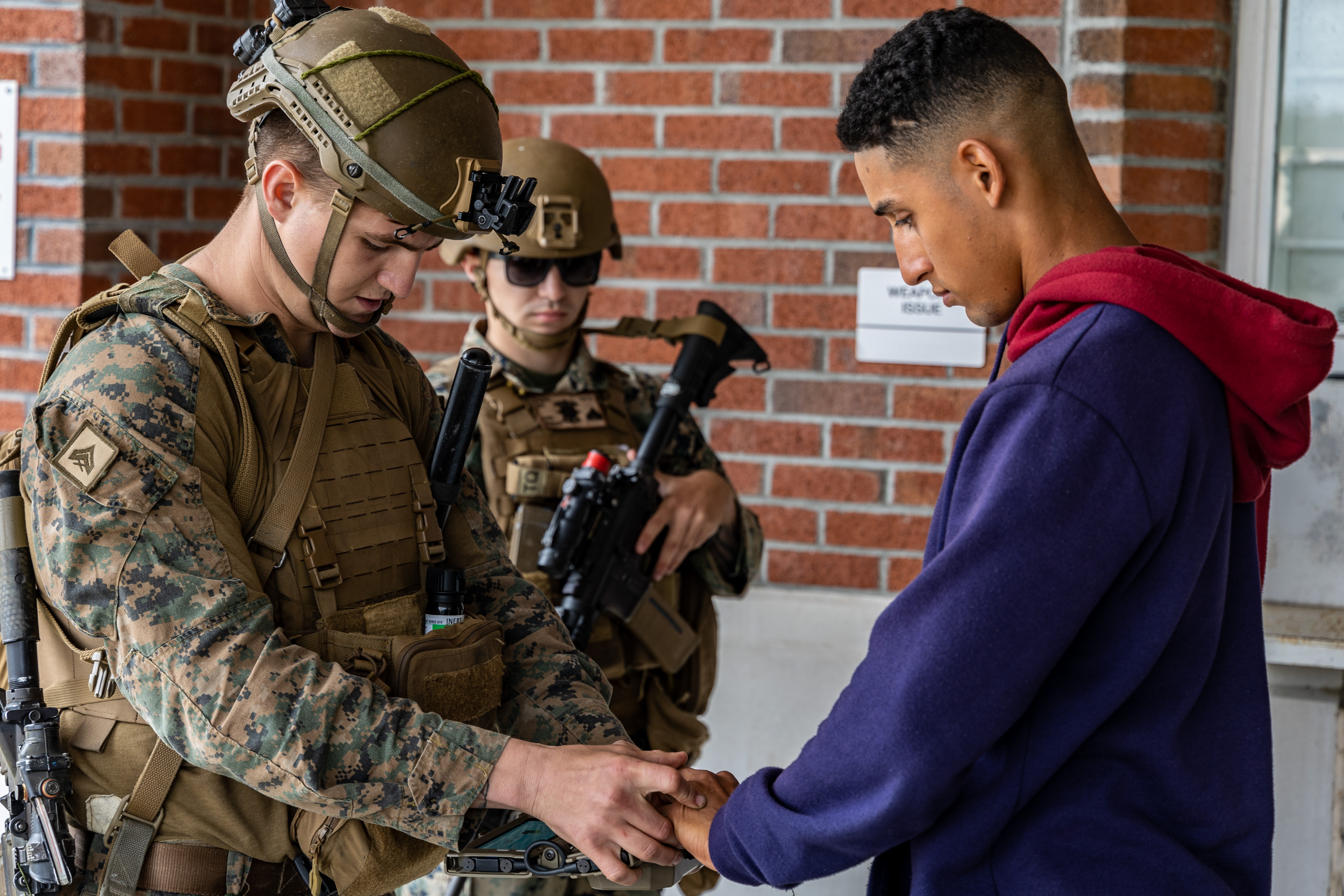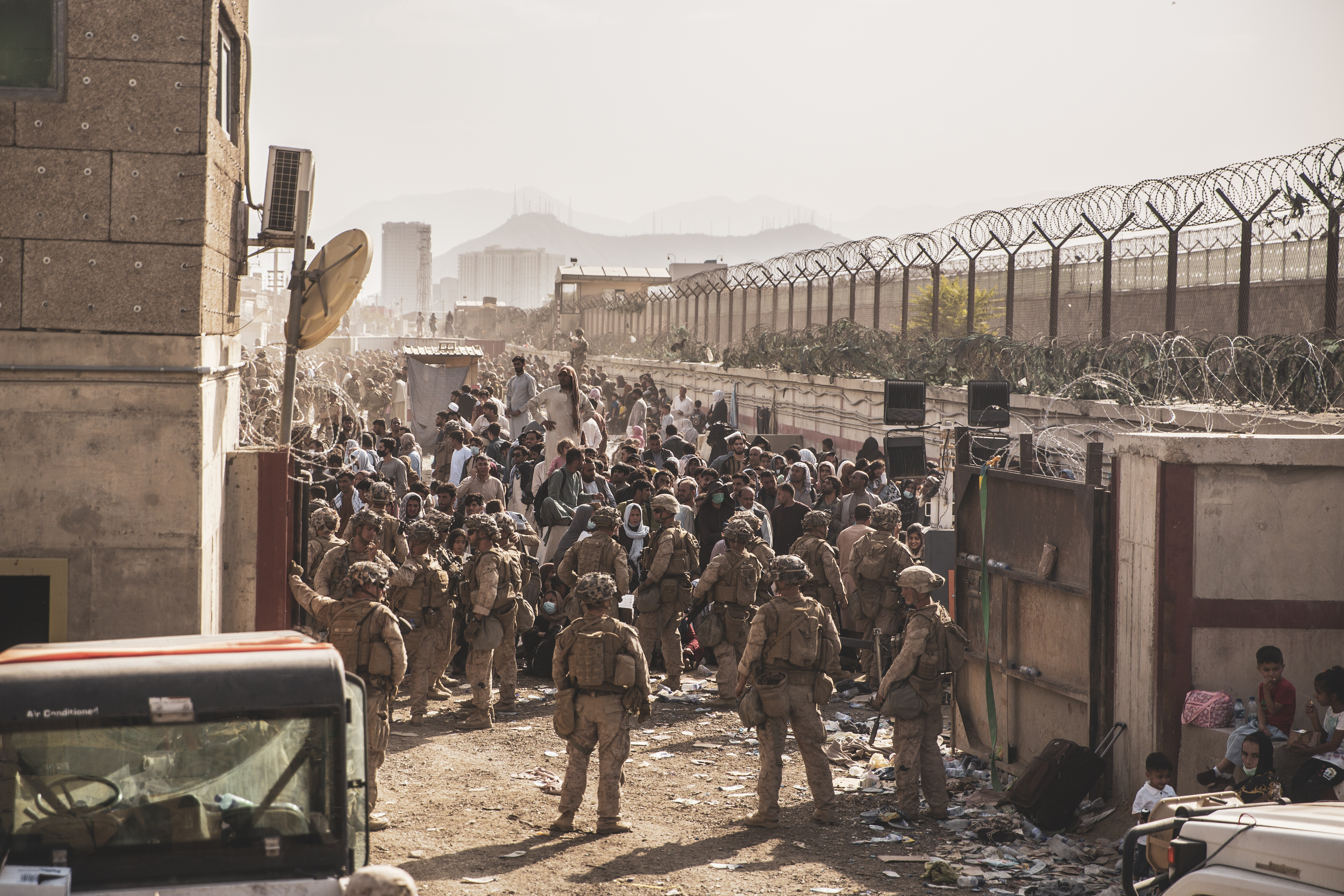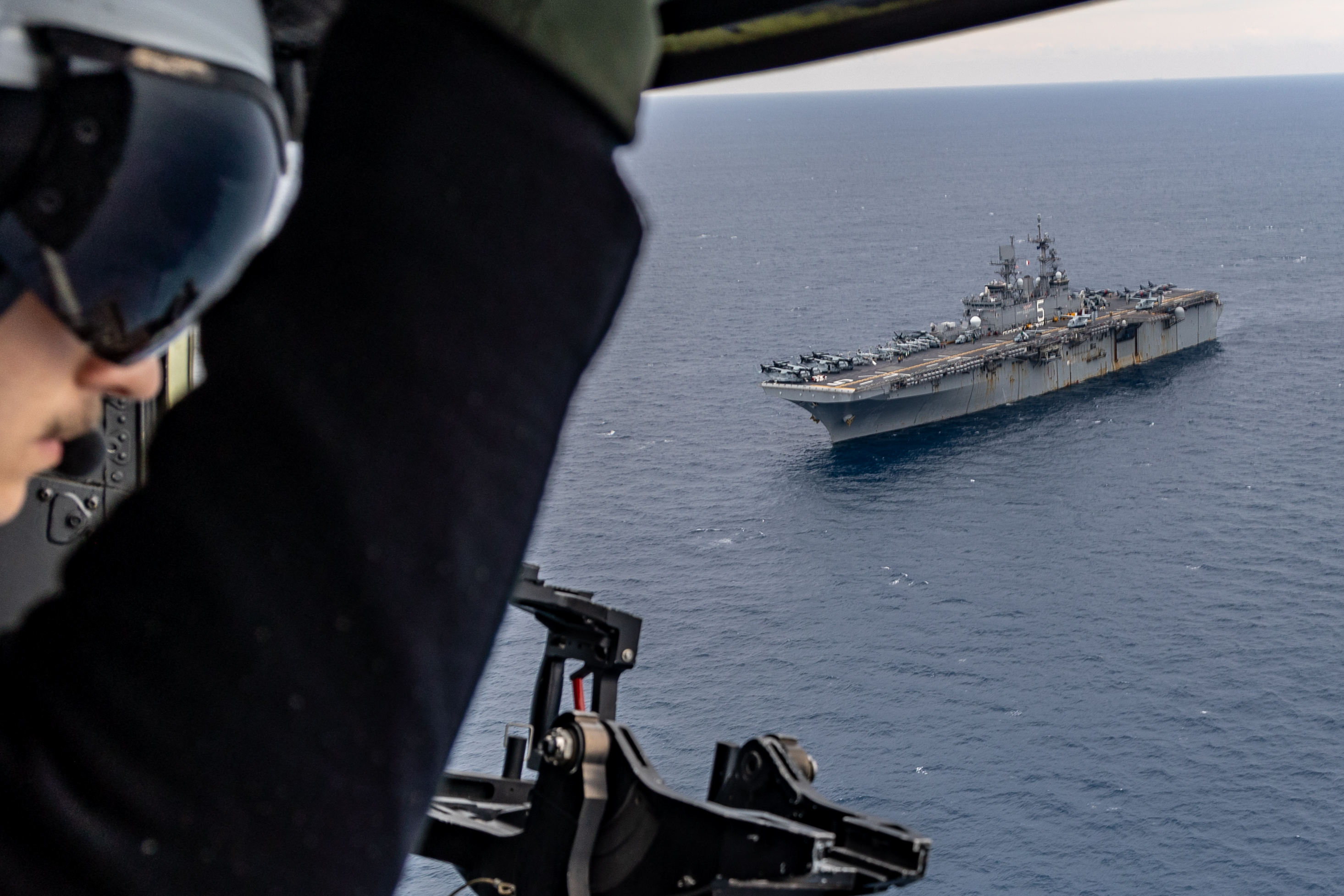
CAMP LEJEUNE, N.C. – For five days, a U.S. consulate in the tiny country of Obsidian had been surrounded by protestors who were upset with the American presence in their coastal nation. Fomented by an armed opposition group, the situation for the State Department staff, Marine guards and Americans in the region had become increasingly unstable.
First, additional Marines supported the guards by flying in as extra security. Then a command element from the 26th Marine Expeditionary Unit reinforced the Marines at the consulate. Finally, the Bataan Amphibious Ready Group sailed off the coast of Obsidian, prepared to fly off Americans and others in harm’s way aboard the 26th MEU’s MV-22 Osprey tiltrotors in a non-combatant evacuation operation – NEO – an acion undertaken by the Department of Defense at the request of State.
Obsidian is actually a small section of North Carolina around Camp Lejeune, but the scenario shares similarities with several previous emergency evacuations and exercises the MEU’s ability to pull off a NEO.
In a conference room in the pretend consulate, Marines and State Department officials outlined to reporters the exercise over the din of the protestors outside. The rotating cast of some real refugees from unstable governments themselves chanted, banged drums, waved flags and worked to make the Marines tasked with protecting the U.S. consulate in Obsidian unsettled.
Jonathan Berger, a foreign service officer with the State Department and a policy advisor to Marine Forces Special Operations Command, drew parallels to how the scenario mirrored protests in Al Maty, Kazakhstan and the rapid evacuation within the last week of State Department officials from the embassy in Sudan by Navy SEALs and Army Special Forces.
“They all have pretty similar triggers, in terms of what’s happening. Are the roads closed? Is the airport closed? Are the threats to Americans? Are their bombs going off? Things like that. That will determine how we’re drawing down,” Berger said.
“In a situation like Sudan, and the exercise we’re playing here, things ramped up much more quickly … It is pretty apples to apples.”

State will evaluate the results to inform how it responds to crises in the future.
“We’ve been collecting lessons learned on exercises like this and real-world crises. For years, this has been part of our process,” Tony Pontarelli, a former Marine now with the State Department’s office of crisis management training, told reporters on Monday.
“We collect lessons learned through a variety of means … and then we try to track that. We look for trend analysis, and then we use that information to either change or influence policy.
For the Marines, the NEO is a core mission of the embarked MEU that has a unique training set to not only transport, feed and provide medical care to evacuees at the request of the State Department, but can also undertake the logistics chore of processing and tracking those who they’ve moved out of danger.
“You go through a myriad of conditions and triggers from anything from: ‘Hey, that was great, the situation is resolved, glad we could establish a better relationship,’ to things have degraded in the local environment. We’ve met triggers and the Department of State asked for assistance to get a partial element out or to get maybe citizens that are isolated in a different location out, or to set up another evacuation control center there to the actual evacuation of the site itself,“ 26th MEU executive officer Lt. Col. Josef Wiese told USNI News in a Sunday interview.
“Inside this scenario, we are trending towards the full evacuation piece … [an] opportunity to really maximize the full training value of it and go to the limits of what we may be asked to do. It’s a way to test the capabilities of the Marine Expeditionary Unit.”

Marines and State officials avoided making direct comparisons to the current exercise with the 2021 evacuation from Afghanistan. The combined State and Pentagon operation evacuated about 120,000, and in the process 12 Marines and a soldier died in an attack from an ISIS-K suicide bomber.
Throughout the exercise that began on April 18th, the unrest of the Obsidian population came to a boil over several days, to the point of testing the Marines. Rather than overwhelm the protestors with force, the Marines in the exercise responded in kind with non-lethal and riot control tactics in an effort not to escalate tensions.
Part of the exercise was not to haphazardly throw people on aircraft and fly them to USS Bataan (LHD-5), operating just offshore, but to gradually increase the pressure before MV-22 Ospreys began flying out evacuees.

“This is not meant to be a very quick snatch and grab,” 1st Lt. Justin Steiner with the MEU’s combat logistics battalion told USNI News on Monday.
“This is meant to help with a more organized drawdown to get people out.”
That included helping fill out paperwork for role players, searching for weapons, taking retina scans and other biometric information for identification, handing out wristbands with barcodes and managing tired and cranky masses.
At the end of the scenario, the MEU will run an after-action report that will incorporate lessons from the exercise and pass them out throughout the service.
The exercise comes as the Marines have pushed the Navy and Congress for a floor of 31 amphibious ships to meet their requirements for presence, in case it’s needed not only for combat, but also for humanitarian support or non-combatant evacuations. Marine leaders said a lack of amphibious shipping prevented them from supporting the recent earthquakes in Turkey.
During a hearing last week, Marine Corps commandant Gen. Berger told the Senate Armed Services Committee that if the resources were available, there would have been a MEU off the coast of Sudan.

“If we had the capacity, we would have a Marine Expeditionary Unit and Amphibious Ready Group off the coast of Africa right now, so that if Sudan got worse, that [U.S. Africa Command] would have a number of options,” Berger told the Senate panel on April 20.
“You have to be there with allies and partners because they have to believe that the United States is not running away from them. That we are going to be there even when things get tough.”





